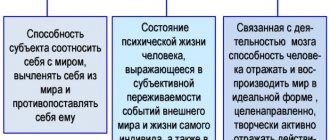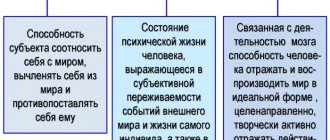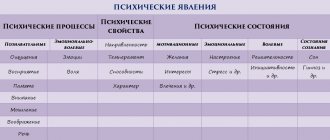To quickly switch from one emotional or mental state to another, you can use many methods: self-control, self-hypnosis, sports or sleep (active and passive discharge), tears, switching or turning off attention, rationalization, situation analysis, auto-training, attitude change, meditation, relaxation and other. And even prayers from the perspective of psychology are a method of self-regulation. This is how they help, because they allow a person to come to consciousness and find a rational solution. What other methods of self-regulation are there? Let's figure it out.
Direct and indirect methods
Direct methods
Direct methods of influencing the psyche include music. Yes, its effectiveness was experimentally proven back in the 19th century by V. M. Bekhterev, although intuitively music has been used for treatment purposes since ancient times.
The second method is libropsychotherapy, or treatment with special literature. Books draw a person into a fictional world, make them experience the emotions of the characters and distract them from their own experiences.
Indirect methods
- Work and sports are the most effective indirect methods. They provide relaxation, charge with positivity and distract from worries.
- Imagotherapy, or role-playing games, is a method of correcting a condition through personal changes. In the process, new character traits are formed, the personality structure and the experience of problems change.
- Suggestion and self-hypnosis. The spoken words are not criticized, but are accepted by default and become a person’s internal attitude, which corrects his activity.
As you may have noticed, these methods do not necessarily relate to self-regulation, but there are methods exclusively for independent use that develop the ability to self-government. For example, autogenic training. You will also learn about this from the article, but a little later.
Psychotechnicians for behavior correction tasks
Decreased arousal
Effectively use:
- distraction and switching of attention;
- goal setting (consider different options);
- physical relaxation;
- psychomuscular and autogenic training;
- breathing exercises for relaxation.
Resource Activation
Effectively use:
- autogenic training for mobilization;
- increased motivation;
- breathing exercises for activity;
- plot performances;
- memories of active emotional states and the situations that caused them;
- mental and sensory stimulation;
- heterosuggestion.
Mental desensitization
Effective:
- presentation of successful behavior;
- self-hypnosis of confidence and neutral attitude towards harmful factors;
- deliberate passive attitude.
Relieving Emotional Stress
Effective:
- listening to music;
- relaxation;
- substitution;
- rationalization;
- fantasy.
Recuperation
Effective:
- meditation;
- suggested dream;
- self-hypnosis for quick recovery.
Regulation of the autonomic system
Effective:
- auto-training;
- heteroregulation;
- breathing exercises.
Autogenic training
The method was developed in 1930 by the German psychotherapist I. G. Schultz. In Russia, the method has been used and studied since 1950.
At first, auto-training was used only for the treatment of nervous disorders, but gradually began to be used for preventive purposes. Today this is a popular method of unloading the emotional and mental state in all areas and activities: study, work, relationships, and so on.
Auto-training in the modern sense even has its own subtypes:
- psychomuscular training (PMT);
- psychotonic training (PTT);
- psychoregulatory training (PRT).
But the basis of any auto-training is a relaxation mechanism, that is:
- mastering muscle relaxation techniques;
- development of skills for sensing heat and cold in the body;
- increasing concentration and volitional attitude towards the general condition of the body.
The purpose of auto-training is to relieve muscle and emotional tension, to instill in a relaxed state the development of volition.
I suggest you get acquainted with morning auto-training, which will charge you with energy and positivity for the whole day. You can perform it at any time, even immediately after waking up, while lying in bed. You just need to say the following words (installations). It is very important to speak on your own behalf in the present tense.
The text can be saved and printed as a reminder
Methods of self-regulation of emotional states article on the topic
Methods of self-regulation of emotional states
After the car participating in the race has reached the finish line, the mechanics carefully inspect it and repair it, bringing it into working condition. Unfortunately, people do not always behave so rationally in relation to their body and soul. Carrying out professional and family responsibilities, being under stress, we do not always have the opportunity and time to analyze our stressful state that has arisen as a result of interpersonal problems or conflicts, and to restore strength. However, no matter how busy we are, we can always find an opportunity to calm our own nerves and put ourselves in order. To do this, you need to master self-regulation methods that can be used in any situation: during business negotiations, during a short coffee break, after a difficult conversation with your boss or with relatives.
Self-regulation is the control of one’s psycho-emotional state, which is achieved by a person’s influence on himself using the power of words (affirmation), mental images (visualization), control of muscle tone and breathing. Self-regulation techniques can be used in any situation.
Regulation of nervous tension and constant monitoring of stress levels must be carried out by a person constantly and on a conscious level. This is especially important for representatives of stressful professions, for situations associated with high neuropsychic stress, as well as when the individual is prone to anxious behavior. Currently, more and more research suggests that taking care of health (physical and mental) should be an integral part of lifestyle. If one’s health deteriorates, a person can use various methods aimed at optimizing one’s own internal state.
Methods of mental self-regulation are aimed at changing the mental image of a life situation presented in a person’s mind in order to mobilize the processes of psychosomatic interaction, optimize the psycho-emotional state and restore full functioning.
The use of mental self-regulation techniques allows:
- reduce anxiety, fear, irritability, conflict; activate memory and thinking;
- normalize sleep and autonomic dysfunction;
- increase the efficiency of professional activities;
- teach techniques for independent formation of positive psycho-emotional states.
A person interested in maintaining health should have a number of methods and techniques in stock. Moreover, this set will be individual for each person, since there is no universal way to reduce tension. To understand whether a particular method is suitable or not for us personally, we should practice it for 1-2 weeks and analyze the strength of its effect on health. Only in this case can we choose methods that are effective for us.
At the end of the working day it is important:
- sum up what you did during the working day, and even if you tried to do more, praise yourself not only for the results obtained, but also for the efforts made to achieve goals (this must be done, despite the fact that the boss or colleagues may have been waiting more from you);
- when leaving work, “forget” about it: leave the working role of manager, administrator, accountant and remember your other roles. You can even say to yourself: “I’m not Elizaveta Petrovna - an accountant, now I, Lisa, am a lover of sports dancing.” It is clear that the higher the level of management, the more difficult it is to do this, since the very first mobile call of any employee will again remind them of their professional role. However, even small and very short breaks from “getting out of the working role” are positive for the brain. The important thing here is to control your consciousness in order to quickly catch yourself thinking about your “favorite” job. To switch attention faster, our “Elizaveta Petrovna” can listen to a cassette with music in the car, to which she usually does fitness, and even make possible micro-movements with her body. This can help you step out of your professional role.
Exercises for self-regulation
Special exercises aimed at regulating the mental state in a specific situation help to find calm. There are many such exercises developed; you can choose the one that is most convenient to use, quick and effective.
Some special exercises and ways to quickly calm down:
Breathing control is an effective means of influencing muscle tone and emotional centers of the brain. Slow and deep breathing (with the participation of the abdominal muscles) reduces the excitability of the nerve centers and promotes muscle relaxation, that is, relaxation. Frequent (chest) breathing, on the contrary, ensures a high level of body activity and maintains neuropsychic tension.
While sitting or standing, try to relax your body muscles as much as possible and focus on your breathing.
- On the count of 1-2-3-4, take a slow, deep breath (while your stomach protrudes forward and your chest remains motionless).
- Hold your breath for the next four counts.
- Then exhale smoothly to the count of 1-2-3-4-5-6.
- Hold your breath again before the next inhalation for a count of 1-2-3-4.
After just 3-5 minutes of such breathing, you will notice that your state has become noticeably calmer and more balanced.
Breathing exercises:
- "Sleeping Flower"
On 1-2-3-4 – inhale, on 1,2,3 – exhale.”
- "Unmilked Cow"
Participants perform the exercise as follows: take a deep breath, then sing (moo) a melody as they exhale.
- "Scent of Roses"
The group members take full breaths with their eyes closed, imagining a bouquet of roses in front of them. Holding your breath at the top, you need to catch a feeling of lightness and elation.
Methods related to the control of muscle tone and movement.
Under the influence of mental stress, muscle clamps and tension arise. The ability to relax them allows you to relieve neuropsychic tension and quickly restore strength. As a rule, it is not possible to achieve complete relaxation of all muscles at once; you need to focus on the most tense parts of the body.
- Exercise "Swinging"
In a standing or sitting position, you need to relax and tilt your head back so that it is comfortable, as if lying on a pillow. Close your eyes and begin to sway slightly, with a small amplitude from side to side, back and forth or in a circle. You need to find the most pleasant rhythm and tempo.
- Exercise “Relaxation point”
In a standing or sitting position, you need to relax your shoulders and lower your arms freely. Start slowly rotating your head in a circle. When you find the most comfortable position and want to stop, you need to do so.
After resting in this position, continue rotational movements. Rotating your head, imagine moving towards harmony, and at the point of relaxation feel the achievement of this goal.
- A positive effect can be achieved simply by shaking your hands well and quickly several times, as if shaking off water. Imagine that stress and nervousness are leaving your fingertips.
- To relieve tension and relax your muscles, you need to jump in place, as if shaking off snow.
- Exercise “Sunny Bunny”
The exercise is suitable for both adults and children. It is pleasant, playful, fun.
Take a comfortable position, sitting or reclining, relax all your muscles. Close your eyes and imagine yourself in a sunny meadow, beach, riverbank or other pleasant place where the sun is shining. Imagine how the gentle sun warms the body and, together with the sunlight, the body is saturated with peace and happiness.
A ray of sunshine ran across the lips and drew a smile, across the forehead, relaxing the eyebrows and forehead, sliding onto the chin and relaxing the jaw. The sun's ray runs over the body and relaxes all its parts in turn, gives peace of mind, and removes anxiety. You can add sounds of nature: splashing waves, birdsong, rustling leaves.
Methods associated with the impact of words
Verbal influence involves the conscious mechanism of self-hypnosis, and has a direct impact on the psychophysiological functions of the body. The formulations of self-hypnosis are constructed in the form of simple and brief statements, with a positive focus (without the particle “not”).
One of these methods of self-regulation is based on the use of self-orders - short, abrupt orders given to oneself. Use saproication when you are convinced that you need to behave in a certain way, but you have difficulty organizing your behavior accordingly. Tell yourself: “Talk calmly!”, “Be silent, be silent!”, “Don’t give in to provocation!” - this helps to restrain emotions, behave with dignity, comply with ethical requirements and rules of communication.
The sequence of working with self-orders is as follows:
Formulate a self-order.
Repeat it mentally several times.
If possible, repeat the self-command out loud.
Formula for increasing self-esteem and positive perception of others
I'm good
I, I, I'm good. I, I, I am calm. I, I, I'm healthy. I, I, I am healthy. I, I, I am cheerful. I, I, I am very smart. I, I, I am very kind. I, I, I am very strong. I love you.
Methods associated with the use of images
The use of images is associated with an active influence on the central nervous system of feelings and ideas. We don’t remember many of our positive feelings, observations, and impressions, but if we awaken the memories and images associated with them, we can relive them and even strengthen them. And if with words we influence mainly consciousness, then images and imagination give us access to powerful subconscious reserves of the psyche.
To use imagery for self-regulation:
- Specifically remember situations, events in which you felt comfortable, relaxed, calm - these are your resource situations.
- Do this in the three main modalities inherent in man. To do this, remember:
1) visual images of the event (what you see: clouds, flowers, forest);
2) auditory images (what sounds do you hear: birds singing, the murmur of a stream, the sound of rain, music);
3) sensations in the body (what you feel: the warmth of the sun's rays on your face, splashes of water, the smell of blossoming apple trees, the taste of strawberries).
- When feeling tense or tired:
1) sit comfortably, with your eyes closed if possible;
2) breathe slowly and deeply;
3) remember one of your resource situations;
4) live it again, remembering all the visual, auditory and bodily sensations that accompanied it;
5) stay inside this situation for several minutes;
6) open your eyes and get back to work.
In conclusion, we note the following. In the work to prevent neuropsychic tension, a primary role should be given to the development and strengthening of cheerfulness, faith in people, and constant confidence in the success of the business one has undertaken.
Duration of exercises: from one to fifteen minutes. They can be performed in combination, several times a day.
Simple exercises can restore a sense of joy in life, self-confidence, calm down and achieve peace of mind.
Parents are often concerned about their children’s lack of composure, excessive activity, or, on the contrary, isolation, timidity, and often aggressiveness and tearfulness. A balanced, joyful child suddenly becomes conflicted and restless. All these are signs of internal psycho-emotional stress, or a consequence of some “childhood” problem that adults have not yet figured out. How to help a child in such moments? The most correct thing is to teach him to help himself, that is, to introduce him to methods of self-regulation. The child can do some exercises on his own, while in others he should be helped by parents or adults.
“GET YOURSELF IN HANDS” (for children from 5 years old)
The child is told: “As soon as you feel that you are worried, you want to hit someone, throw something, there is a very simple way to prove your strength to yourself: clasp your elbows with your palms, press your hands tightly to your chest - this is the pose of a self-possessed person.”
“GROW INTO THE GROUND” (for children from 5 years old)
You need to tell the child: “Try to press your heels very, very hard on the floor, clench your hands into fists, clench your teeth tightly. You are a mighty, strong tree, you have strong roots, and no winds are afraid of you. This is the pose of a confident person.”
"YOU ARE A LION!" (for children from 5 years old)
The child is told: “Close your eyes, imagine a lion - the king of animals, strong, powerful, self-confident, calm and wise. He is handsome and self-possessed, proud and free. This lion has the same name as you, he has your name, your eyes, your arms, legs, body. Leo is you!
"WAKE UP, THIRD EYE!" (for children from 5 years old)
The child is told: “A person sees not only with his eyes. Wisdom and intelligence, endurance and calmness can awaken in your third eye. Extend your index finger, tense it and place it on your forehead between your eyebrows above your nose. Here is your third eye, the eye of wisdom. Massage this point, saying: “Wake up, third ointment, wake up, third eye...” 6-10 times.
“RELIEF FATIGUE” (for children from 5 years old)
You need to tell the child: “Stand up, spread your legs wide, bend them slightly at the knees, bend your body and lower your arms freely, straighten your fingers, bow your head to your chest, open your mouth. Rock slightly to the sides, forward, backward. Now shake your head, arms, legs, and body sharply. You’ve shaken off all your fatigue, just a little bit is left, repeat again.”
“CHARGED OF CHARGE” (for children from 5 years old)
You need to tell the child: “Sit freely. Stretch your arms forward and prepare two fingers: thumb and index. Take them by the very tips of the ears - one on top, the other on the bottom of the ear. Massage your ears, saying: “Ears, ears hear everything!” -10 times in one direction and 10 in the other. Now put your hands down, shake your palms. Prepare your index finger, extend your hand and place it between your eyebrows above your nose. Massage this point the same number of times with the words: “Wake up, third eye!” Shake your palms, gather your fingers into a handful, find a hole at the bottom of your neck, put your hand there and say: “I breathe, breathe, breathe!” - massage the hole 10 times in one direction and 10 times in the other. Well done! You see, you hear, you feel!” Caution: an adult monitors the force of pressure on important points of vital activity and the correct location of the points.
Self-hypnosis
In fact, the technique described above is self-suggestion. With the help of these words, your faith in your own strength and the implementation of your plans increases. You get set up for success and understand that everything depends only on you.
Self-hypnosis is always positive statements in the first person, spoken in the present tense. You can come up with your own up-to-date and customized settings. Self-hypnosis directly affects the psychophysiology of the brain, forces it to concentrate on the goal.
There are several principles for constructing phrases. You are addressing the subconscious, so it is imperative to follow them.
- Use positive and affirmative phrases and avoid “not” and “never”. For example, instead of “my head doesn’t hurt,” say “the pain has left my head.”
- Maximum specificity. Don't skimp on your words and sentences. Break a big goal into small ones. For example, “I am successful” is a common phrase. Decipher what this means in your mind.
- Try to replace abstractions. For example, not “the head has passed,” but “the forehead has cooled.”
- Do not complicate the wording, use simple words, most importantly, understandable to you.
- One phrase – maximum 4 words.
- Always only the present tense. The subconscious perceives this as already accomplished, and what is said actually happens.
Natural self-regulation
By nature, every person has natural (or involuntary) self-regulation of states, i.e. Our psyche can deal with stress and recover on its own.
However, not all people have sufficient natural self-regulation of mental states: some people are able to cope with even the most severe stress without much effort, while others are unable to do this. Why is this happening?
The extent to which natural self-regulation of mental states occurs is influenced by three main factors:
- features of the structure of the psyche;
- Lifestyle;
- way of thinking.
Let's look at each of the above factors in more detail.
Features of the structure of the psyche
To determine the structural features of the psyche, the concept of “temperament” is used - this is a type of higher nervous activity, i.e. a set of stable dynamic features of mental processes that differ from each other in tempo, rhythm and intensity.
There are four main types of temperament:
- Sanguine (strong, balanced and agile).
- Choleric (strong, unbalanced and mobile).
- Phlegmatic (strong, balanced and sedentary).
- Melancholic (weak, unbalanced and inactive).
Sanguine and phlegmatic people can easily cope with stress, but melancholic and choleric people cannot. At the same time, melancholic people are more susceptible to sadness, sadness, apathy, and choleric people are characterized by increased aggressiveness.
Lifestyle
The phrase “a healthy mind in a healthy body” is known to everyone. The basic principles of a healthy lifestyle are moderation, benefit, regularity. This is the right approach to nutrition, physical activity, sleep, avoiding stressful situations and monitoring your health.
If your body is in a painful state, your psyche simply cannot cope with stress because it does not have enough resources. But a physically healthy person has much more strength to cope with stress.
Way of thinking
We perceive reality as we imagine it. And the way we perceive it directly affects our emotional and physical state.
Cognitive distortions can cause the emergence and development of negative conditions even if a person is absolutely healthy, both physically and mentally. Irrational attitudes (beliefs) make us experience stress even in cases where there is no real threat to our condition, or make it disproportionate to the real state of affairs. But rational cognitive attitudes allow us to effectively cope with even the most difficult life situations.
To change your way of thinking, you need to:
- fight cognitive distortions;
- train a sense of humor;
- learn to manage your attention;
- master the skills of self-motivation and self-control.
It is precisely because of differences in the structure of the psyche, lifestyle and thinking that some people do not need to make any volitional efforts in order to return to normal, while other people simply need to do this in order to ensure emotional stability and mental stability.
The list of signals by which you can recognize that your psyche is not able to naturally cope with stress is as follows:
- increased irritability, conflict, imbalance, outbursts of anger;
- constant feeling of internal tension and dissatisfaction;
- decreased mood, constant sadness, lack of joy, apathy, chronic fatigue, lethargy, inability to enjoy life, lack of motivation, low performance and endurance;
- increased anxiety, feelings of fear, anxiety;
- lack of self-confidence, inadequate self-esteem, feeling of lack of willpower;
- sleep problems, overeating or unwillingness to eat, hypochondria, constant pain, etc.
If you notice these symptoms in yourself, you need to change the way you live and think, and also learn volitional (or voluntary) self-regulation.
Meditation
Meditation involves working with attention: relaxing it or, conversely, increasing concentration. The purpose of meditation is to relieve emotional stress and develop the ability to stop the flow of thoughts.
Focus on the score
Count slowly from 1 to 10, concentrating on each number. You shouldn't think about anything else. If you realize that your thoughts have again “fled away” into your problems, then start counting from the beginning. Count like this for a few minutes (without losing your way).
Focusing on emotions and mood
- Record your inner thoughts, inner speech.
- Stop her.
- Catch your mood and focus on it.
- Rate it: good, bad, sad, happy, average, upbeat.
- Now focus on your emotions. Imagine yourself in an elevated, joyful state. To do this, remember a joyful event in life, a pleasant image.
- Get out of the state of relaxation.
- Go through reflection, that is, evaluate your state and thoughts now and during the exercise.
Emotional Regulation Questionnaire
There are several useful tools to help you assess your ability to regulate emotions. Below is one of the most popular.
Emotional Regulation Questionnaire
This questionnaire (The Emotion Regulation Questionnaire, EQR) is the most popular emotion regulation scale among American psychologists. It was developed in 2003 by James Gros and John Oliver based on preliminary research.
The questionnaire consists of 10 questions, the answers to which are given on a scale from 1 (strongly disagree) to 7 (strongly agree). There are two facets that the scale covers: the cognitive reappraisal phase and the expressive suppression phase.
The six questions that make up cognitive reappraisal are as follows:
- When I want to experience positive emotions, I change the way I think.
- When I want to stop experiencing negative emotions, I change the way I think.
- When I'm faced with a stressful situation, I force myself to think about it in a way that helps me stay calm.
- When I want to feel a more positive emotion, I change my opinion about the situation.
- I control my emotions by changing the way I think about a situation.
- When I want to feel less negative emotions, I change my mind about the situation.
The four questions that make up the expression suppression facet are:
- I keep my emotions to myself.
- When I feel positive emotions, I try not to express them.
- I control my emotions without expressing them.
- When I feel negative emotions, I don't want to express them.
If you want to know more about this test, go here (English, PDF file).
Trainings
Perhaps the most popular psychological technique today. There are many trainers and people willing to undergo training. Trainings are divided into separate profiles covering narrow topics. For example, training to improve stress resistance is popular. Most often they are directed:
- to increase self-esteem (or decrease to the correct level if necessary), emotional stability, self-confidence;
- formation of motivation to achieve success and behavior strategies under stress.
Breathing exercises
There are many options for breathing techniques, but it is a mistake to believe that they are all aimed at slowing down mental reactions. On the contrary, there are exercises that activate the brain.
Relaxation exercises
The goal is to master conscious natural breathing, relieve muscle tension and tension, and calm emotions. I want to introduce you to some exercises.
"Rest"
Place your feet shoulder-width apart, straighten up, and inhale. As you exhale, bend down, relax your neck and shoulders (as if they were hanging calmly on their own). Stay in this position for 1-2 minutes. Breathe deeply, watch your breathing. Slowly straighten up.
"Conscious Breathing"
Sit comfortably and relax, but keep your back straight. Take your first shallow breath in and out. Then inhale and exhale a second time, but deeper. And for the third time, inhale with your whole chest, but exhale very slowly (one in three).
"Breathing under stress"
Breathing is rhythmic and combined with walking. The scheme is as follows: two steps - inhale, two steps - exhale. Gradually increase the duration of exhalation, that is, then it will be: two steps - inhale, three steps - exhale, and so on.
Arousal exercises
The purpose of the following exercises is to increase neuropsychic activity and activate resources.
"Lock"
Sit up straight, place your hands on your knees and clasp them together. Inhale and at the same time raise your arms up (palms facing up). Hold your breath for a couple of seconds, exhale sharply through your mouth and “drop” your hands on your knees.
"Getting ready for work"
You need to breathe according to a certain pattern described below. The first number is inhalation, the second (in brackets) is retention, the third is exhalation.
2(2)+2; 4(2)+4; 4(2)+5; 4(2)+6; 4(2)+7; 4(2)+8; 8(2)+5; 9(4)+5; 10(5)+5.
Ways to regulate emotional states based on breathing exercises
Slow your breathing to 8-10 breaths per minute
To learn to slow down your breathing, first, learn to focus all your attention and all your thoughts on your breathing.
Next, practice breathing with your diaphragm; to do this, you can put your hand on the stomach area and watch how the muscles in this area stretch, while trying to keep your chest and shoulders motionless.
When you succeed, try to hold your breath while slowly counting to yourself to 8-10. Then exhale slowly for a count of 3. Repeat 1-3 times or more if needed.
You can do exercises to slow your breathing while lengthening your exhalation. For example: inhale on a count of 2, exhale on a count of 4, or inhale on a count of 3, exhale on a count of 6. It is advisable to learn this breathing in advance so that severe anxiety, fear or panic does not take you by surprise.
Breathing in a square
Find a rectangular object with your eyes: a picture, a window, a door, a drawing in an article on the monitor screen, and do the following. Look to the upper left corner and inhale while counting to four. Move your gaze to the upper right corner and hold your breath for a count of four. Bring your breath to the lower right corner and exhale for a count of four. Move your gaze to the lower left corner and calmly say: “Relaxed and smiled.”
Paper bag method
It especially helps with panic conditions. Take a paper bag, place it on your face so that it covers your mouth and nose, and begin to breathe slowly and evenly into it. Breathe into it until you calm down and the acute condition subsides. You can cup your hands and breathe in them in the same way. Panic goes away due to the restoration of gas balance in the blood - there is a decrease in excess oxygen, which causes panic, and an increase in carbon dioxide.
Relaxation
The goal is to realize, find and relieve muscle tension; learn muscle control.
"Tension-relaxation"
Stand up straight, focus on your right arm and tense it. After a few seconds, release the tension. Do the same with your left hand, then with both at the same time. After - with the right leg, left leg, both legs, lower back, neck.
"Muscle Energy"
- Bend your right index finger as much as possible (without damaging it).
- Feel where the tension goes. The finger itself, the hand, the elbow, the neck?
- Now try to gradually ease the tension: in the neck, shoulder, elbow. But the finger is still bent and tense.
- Release tension from your other fingers. We don't touch the index finger.
- Managed? Release the tension from your index finger.
- Do the same with your left leg (press your heel into the floor, do not overdo it).
- Where does the tension go? Gradually relax, as in the case of a finger.
- After this, tense your back. I will make a reservation that this exercise is not suitable for people with a bad back (hernia, osteochondrosis). If your back is healthy, then bend over and imagine that a box is placed on your back.
- Where does the tension go? Gradually relax your entire body, last but not least your back.
Methods for regulating emotional states based on switching attention
Breaking contact
If you have an acute emotional reaction while interacting with someone, it is important to break eye contact with them if possible. Maybe take a break or put off the conversation, turn away, go pour yourself some water, move to another room.
Shift attention to something pleasant or funny
Count any objects (those you see in front of you or imaginary ones), and try to focus all your attention on the count. You can count and add numbers. Car numbers, house numbers, make repair estimates, phone numbers, dates of birth of friends, multiplication tables. Switch to communicating with family and friends, call them if no one is around.
Activate physical sensations in the body
You can distract attention by using a mechanical effect on the skin, for example, washing your face with cold water, applying something cold to your wrist, stomach, temples. Rub your hands together until you feel intense warmth in your palms. You can pinch yourself, that is, cause a slight painful sensation. You can snap the rubber band sharply on your wrist. It is strictly forbidden to cause severe pain; it is dangerous.
Involuntary visualization
The goal is distraction from stressful situations and obsessive thoughts by means of involuntary attention against the background of relaxation.
- Close your eyes and look as if at the back of your eyelids. In a couple of minutes you will see dots, spots, lines.
- After some time, these spots may begin to form into some images, faces, objects.
- It is important to do this in a state of relaxation, then gradually obsessive thoughts will come out through these barely noticeable images.
- Keep your face and body relaxed. Don’t try to draw something yourself, but just look, as if from the outside, at what appears.
- This exercise requires skill. During the first practices, attention often slips; you need to consciously return it to the points.
- Then open your eyelids and assess your condition.
Strategies for Emotional Regulation
It's time to introduce you to emotional regulation strategies. Remember, the most important thing is to practice them as often as possible so that they become a habit.
1
Understanding and labeling emotions
One of the most powerful tools in regulating emotions is simply identifying and finding their names.
First, you need to understand the difference between primary and secondary emotions:
Primary Emotions : The initial reaction to an event or stressors in your environment.
Secondary Emotions : A reaction to your primary emotions or thoughts.
Primary emotions are often completely natural reactions to events around us. For example, sadness from a breakup or anger during a conflict. However, secondary ones are more dangerous, although they can be learned to control. You can decide for yourself how to feel a day or a week after the breakup.
Secondary emotions can push us to destructive and inappropriate behavioral actions - this makes it imperative to understand our primary emotions.
Learning to understand, recognize and label emotions is an extremely useful skill that will lay the foundation for managing your feelings.
2
The ability to let go of painful emotions
This is one of the most important skills in emotional regulation - the ability to let go of unpleasant and painful feelings.
A person tends to get stuck in negativity while analyzing what happened. Instead of simply letting go of such emotions, he asks himself destructive questions like “Why did this happen to me?”
The first step to take is to accept that we are suffering. Then you need to see that in reality everything is not so scary.
To learn to let go of negative emotions, do the following:
- Watch your emotions. Recognize that they exist, step away from them.
- Try to imagine your emotions as a wave that you are going through. Do this just once, don't get stuck and overcome yourself over and over again.
- You are not your emotions. They are part of, but do not completely form, the personality.
- Remember that having emotions doesn't mean you have to act. You can simply sit and do nothing.
3
STOP
If you need a clear and understandable method for controlling your emotions, try the STOPP technique.
STOPP is a technique that will help in the most difficult situations, when emotions are raging inside. It includes aspects of cognitive behavioral therapy and mindfulness meditation. You can manage your emotional reactions even in the most intense conflict.
STOP means:
- Stop! (S, Stop). Pause for a second.
- Pay attention to your breathing - how you inhale and exhale.
- What thoughts are in your head right now?
- What's the big picture?
- What's the best thing to do right now?
If you can only learn one skill to help you regulate your emotions more effectively, this is it. The ability to pause in moments of extreme irritation will help you take giant steps in mastering the art of emotional regulation.
4
Ability to distinguish between positive and negative strategies
There are many ways to regulate your emotions, channel them in the right direction and maintain a positive mood. Perhaps you use techniques that, although they allow you to maintain emotional balance, but upon careful examination turn out to be destructive.
Healthy activities and strategies that help you regulate your emotions include:
- walks with friends;
- physical exercise;
- keeping a diary;
- meditation;
- getting enough sleep;
- periodic rest.
Such strategies are good because they not only help you better manage your emotions, but also do not cause you any harm.
Unhealthy actions that, although they help cope with emotions, are actually destructive:
- alcohol and smoking;
- avoiding difficult situations;
- physical or verbal aggression;
- excessive passion for life on social networks.
Remember that such actions help you feel better at first (in terms of managing emotions), but cause long-term irreparable damage.
Did you like the article? Join our communities on social networks or our Telegram channel and don’t miss the release of new useful materials: TelegramVKontakteFacebook
We also recommend reading:
- Storytelling
- Cognitive reframing
- Ways to Develop Emotional Mastery
- Social anxiety
- Cognitive restructuring
- 5 Signs You're a Slave to Your Emotions
- Emotions and health: how they are interconnected
- Self-control: what it is and how to develop it
- Mindfulness and its benefits
- How to express your emotions without becoming a manipulator
- How to Achieve Emotional Maturity
Key words:1Psychoregulation
"Anchoring" method
A self-regulation technique associated with conditioned reflexes, that is, the “stimulus-reinforcement” scheme. Surely it has happened to you that a song or smell evoked specific memories and emotions. This is your “anchor”, which can be positive or negative. Someone's voice or gesture can also be an anchor.
Self-regulation in the form of anchoring involves the conscious setting of “anchors” and their reasonable use, that is, the release of the necessary resource in a stressful situation.
- Identify a situation in which you need resources.
- Determine specifically what resource is needed (confidence, courage, determination, etc.).
- Ask yourself: “If I had this resource now, would I really use it?” If the answer is yes, then you made the right choice and you can move on. If you make a mistake, then select a new resource.
- Remember a situation when you had this resource.
- Choose three “anchors”: what you hear, what you feel, what you see.
- Change your position in space, reproduce in your memory the situation when you had the resource, achieve a peak state.
- Exit it and return to your original place.
- Recreate the situation again and attach three “anchors”. Hold them as long as needed.
- Check the success of the operation: “turn on the anchors”. Are you getting into the desired state? If yes, then everything is fine. If not, repeat the previous point.
- Determine the signal that will hint to you in a difficult situation that it is time to “drop anchor.”
- If necessary, immediately create a complex of evoked states, emotions, and feelings.
Form for an appointment with psychologist Lola Makarova:
If you have any questions for a psychologist regarding the article:
“Ways to regulate emotional states. What can you do on your own?
You can ask them online to our psychologist on Skype:
If for some reason you were unable to ask a question to a psychologist online, then leave your message here (as soon as the first free psychologist-consultant appears on the line, you will be immediately contacted at the specified e-mail), or go to the psychological forum.
“Ways to regulate emotional states. What can you do on your own?
Afterword
Self-regulation really works. The body and brain are one, as psychosomatics has long shown. Therefore, you should not be skeptical about exercises that seem to have little to do with psychology.
But you need to approach the development of self-regulation carefully and following a number of rules:
- clearly see the goal and stick to it;
- the process of developing a skill must be consistent and purposeful;
- be prepared for high energy costs, especially at the beginning of the journey;
- despite consistency and purposefulness, adhere to diversity in the development of self-regulation methods.
It is impossible to create one set of self-regulation methods for a lifetime, since the very ability to self-government is associated with such changeable elements as needs, personality and character traits, motives, and more. You can read more about the intricacies of developing self-regulation and what it is in the article “Self-regulation - what is it in psychology. Concept, types and functions."
The techniques presented in the article were borrowed from the book by T. G. Volkova “Workshop on the psychology of self-awareness and self-regulation: methodological materials for the course.” You can find this literature and learn more about other techniques and methods of self-regulation.
What about emotional dysregulation?
If regulation is the process of controlling one’s emotions, maintaining them in balance and avoiding extremes, then, accordingly, dysregulation is the inability to control emotional reactions. Here's how it happens:
- An internal or external event (thinking about something sad or meeting an angry person) causes a subjective experience (emotions or feelings).
- Then a cognitive response (thought) appears, accompanied by an emotional and physiological response associated with the emotion (for example, an increase in heart rate or hormonal secretion).
- This is followed by appropriate behavior (avoidance, physical action or expression).
People who have difficulty regulating their feelings react to relatively harmless negative events in an exaggerated way, such as crying, screaming, blaming others, acting passive-aggressively, or in other ways that disrupt harmonious relationships or escalate conflict.











